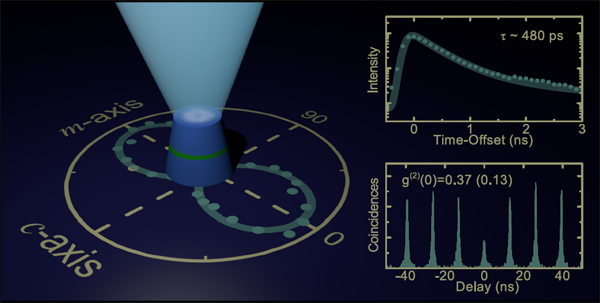Single photon sources are light emitting devices which produce exactly and only one photon on demand. To exploit such light emitters to encode information totally securely, using quantum cryptography, it is helpful to also be able to control the polarisation of the photons which are emitted. Control of polarisation typically involves complicated additional processing steps, but in this paper, researchers from Oxford and Cambridge have worked together to show that in a recently developed materials system, the non-polar nitrides, the nature of the light emitting crystals inherently leads to light with a controlled polarisation axis. Furthermore, these devices run at 220 K. This may not sound like a high temperature, but typical devices in other materials systems require cooling to around 10 K! The significance of operation temperatures above 200 K is that they can be accessed using on-chip cooling, so devices like this could notionally be included in a mobile phone or laptop with no bulk external cooling systems.
Figure: Illustration of the first concurrent realisation of single photon generation, linearly polarised emission with a deterministic polarisation axis, and an ultrafast GHz repetition rate in semiconductor quantum dots, all at 220 K.
T. Wang, T. J. Puchtler, T. Zhu, J. C. Jarman, L. P. Nuttall, R. A. Oliver and R. A. Taylor "Polarisation-controlled single photon emission at high temperatures from InGaN quantum dots", Nanoscale, 2017,9, 9421-9427

